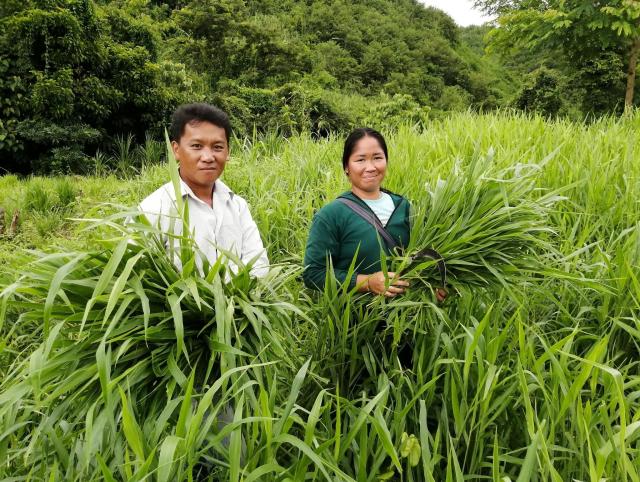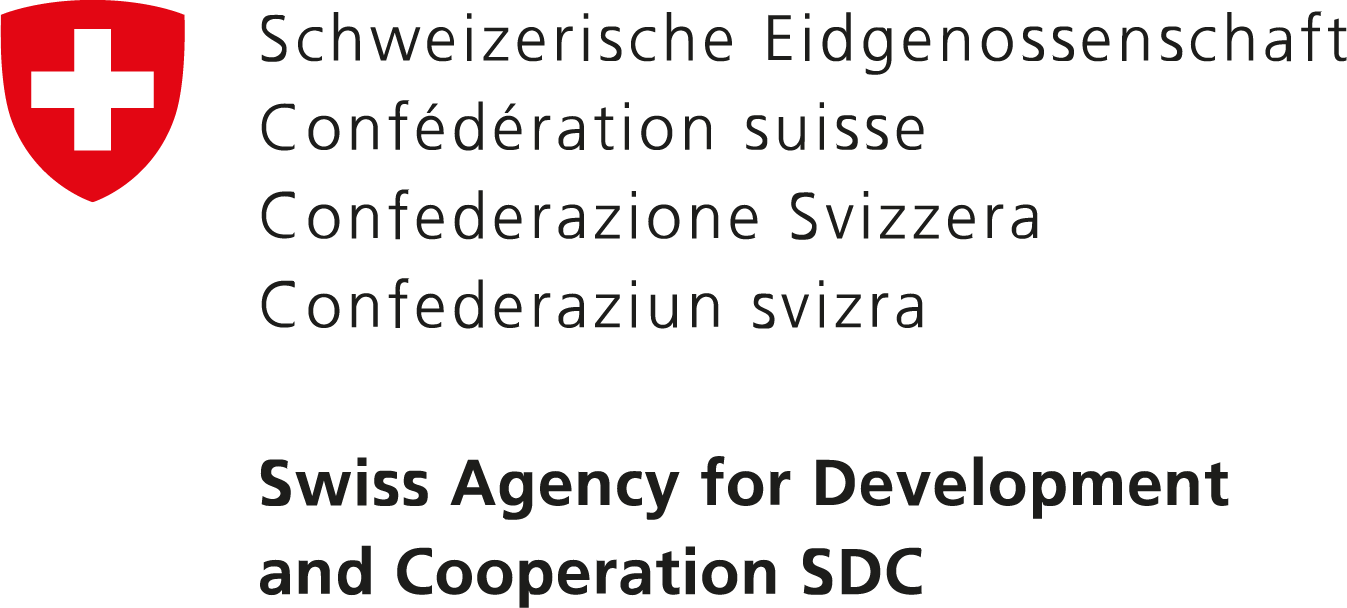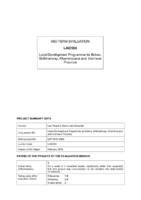Local development programme for Bokeo, Bolikhamxay, Khammouane and Vientiane Provinces
Closed

Preview
Donor(s)
- Luxembourg
- Switzerland
Implementation period
11.05.2017 - 31.12.2022
Total duration
67 months
Context
Laos has seen a rapid macro-economic progress in the past decade with annual GDP growths averaging 7.8%. Nevertheless, the country is still considered a Least Developed Country, ranked 138 of 188 nations in the United Nation’s Human Development Index, and 132 in terms of per capita GDP. Inequality has also increased, including a widening gap between urban and rural areas, particularly the remote upland areas, populated largely my ethnic minority groups. Upland communities have generally lower income, education, health, nutrition and other social indicators compared to urban and lowland communities. This is partly linked to physical isolation, difficult access, and low agricultural potentials, but also to resource competition, environmental degradation and weak public service delivery. Most upland villages still rely on traditional land-use systems, which are increasingly difficult to maintain owing to competition for, and regulations on, the use of natural resources. Despite improving access to roads, electricity and public services, many communities have had difficulties breaking into a more modern economy, land use practices and employment opportunities. Upland villages are therefore often in a precarious economic, social and environmental situation. Recent government policies and plans have emphasised the need to deal effectively with poverty and related problems in such disadvantaged areas.
Project intervention strategy
The ‘Local Development Programme for Bokeo, Bolikhamxay, Khammouane and Vientiane Province’ supports the government’s poverty reduction strategy for upland rural development. It focuses on the 14 poorest districts in four provinces, particularly 230 target villages with a population of 150 000, 76% of whom are ethnic minorities.
The Project supports practical community development combined with governance strengthening for poverty reduction. This two-tiered approach means that the government systems can be informed and improved through demand-driven priorities, field evidence, and actual practice, while the practical development work can benefit from better application of policies, programmes, regulations and public services.
Most of the 23 million EUR budget from the Government of Luxembourg is supporting community development and infrastructure access in the 230 target villages. The community development is based on participatory village development plans, and on funds averaging 35 000 EUR per village that are managed and used democratically by the community for economic, social and environmental activities. These may include community investments in for instance sanitation, upgrade of schools, land management, agricultural extension, training, credit schemes and special support to destitute households. In addition, funds are available for infrastructure development, mostly education facilities and improved water supply systems, identified and constructed to fulfil the Lao Government’s poverty reduction targets for access to education and clean water.
The governance strengthening focuses on improving the systems and capacity of government staff for more effective poverty reduction. This includes improved planning, monitoring, evaluation, donor coordination, investment management, and information systems. Based on the development activities selected in the target villages, the governance component is also able to strengthen the use of sector policies and technical interventions for effective service delivery. The project also supports and engage in policy dialog through participation in sector working groups and other network, knowledge management, and through hosting an annual conference on rural development.
The project is executed jointly by the Ministry of Planning and Investment and by LuxDev, the bilateral arm of Luxembourg Development Cooperation. The Provincial Planning and Investment Departments and District Planning Offices are coordinating the field implementation. For technical support, relevant sector departments are engaged, particularly in agriculture, education, health and public works. Village Development Committees in the 230 villages are responsible for coordinating at the community level, and for managing the village development funds.
The project is very broad in terms of interventions, partners, and geographical scope. It has also built in flexibility in the choice of activities to best respond to the needs and opportunities arising from the field level and the stakeholders. To deal with this complexity, the project is guided by four overall principles
Poverty focus
To ensure that the project contributes to poverty reduction, the target villages are selected among the poorest and most disadvantaged villages in the four target provinces. The project support pro-poor activities that are most likely to have a positive impact. This is done through village poverty analyses, participatory selection of activities, and by using the government poverty indicators and targets for prioritization of infrastructure investments. Success is measured through poverty indicators and targets, including targets defined by the communities. The aim is to use 70% of the project funds for actual investments in the target villages, which is essential for achieving the goal of bringing most of the target villages above the poverty line by 2021.
Alignment
To ensure ownership, efficiency and capacity strengthening, the project uses Lao national systems for carrying out the work. This means activities are managed by government agencies according to their regular mandates – using the government systems for planning, management, procurement and reporting. Plans are linked to national planning, monitoring and evaluation systems. To ensure that the alignment is carried out in practice and that the partners can take full responsibility and credit for the work, around 80% of the budget is channelled through government partners at village, local and national level.
Integration
The development activities are determined by the villages’ needs and opportunities for poverty reduction. Once these needs have been identified, the project is able to engage relevant government partners, private service providers and civil society organizations in the practical work. The project also supports the Lao Government’s decentralization policy by engaging stakeholders at village, district, province and national level according to their stipulated role. This functional and hierarchical integration is held together by participatory village development planning carried out by the communities with support from the local Planning Departments, which outline the activities, budgets and involved stakeholders. These plans are further incorporated in the district and province plans for coordination and oversight.
Capacity strengthening
The Governments of Laos and Luxembourg acknowledges that there are gaps in the capacity of the public sector and the target communities to carry out the project. Project implementation is therefore closely linked to capacity strengthening of the government staff and community members, and to organizational and institutional strengthening particularly regarding the practical application of government systems. Structured capacity development plans are made for all major project interventions, and supported by training, coaching, experience exchange, in-country study visits, technical assistance. To ensure sufficient accountability, transparency and reporting, Lux-Development’s project team is carrying out certain technical, administrative and financial functions and compliance checks, but with the aim to gradually phase out this role as the local capacity increases.
Results
The project targets and modalities are ambitious, but we have reason to believe we can pull it off. From 2010 to 2016, the Lao Luxembourg Cooperation Programme carried out a similar project in Bolikhamxay Province. The 7.6 M EUR project focused on 60 poor upland villages in the more remote uplands, where most people at the start of the project lived on less the 0.7 USD per day. After six years, practical achievements included:
- 396 community projects carried out through village development funds;
- 46 community-owned credit schemes;
- 78 schools, water supply systems and other constructions; as well as
- training and awareness campaigns in 90 villages.
Furthermore, about 100 governance strengthening activities were supported throughout the province. As a result of this support and other socio-economic development, the number of target villages officially classified as poor dropped from 60 in 2010 to only three villages in 2016.
A key to this success was the fact that almost three-quarters of the budget was spent on practical village development. Apart from the tangible development results, the project helped institute practical means of local democracy, participation and empowerment, which is key for the future sustainable development in the villages.
Sustainable Development Goals
-

01. End poverty
-

03. Good health and well-being
-

05. Gender equality
-

10. Reduced inequalities
-

11. Sustainable cities and economies
-

16. Peace, justice and strong institutions
Budget
Total budget
EUR 33,971,543
Contribution breakdown
-
EUR 32,409,343
Ministry of Foreign and European Affairs, Defence, Development Cooperation and Foreign Trade
-
EUR 1,562,200
Swiss Cooperation
Documentation
Explore more
LuxDev implements other projects and programmes in the same country or sector.
All projects-
In execution Laos
Skills for tourism, agriculture and forestry (STAF)
Education, vocational training and employment
Skills for tourism, agriculture and forestry (STAF) -
In execution Laos
Local development programme
Socio-economic development
Local development programme -
In execution Laos
Rule of law, access to justice and good governance
Governance
Rule of law, access to justice and good governance







